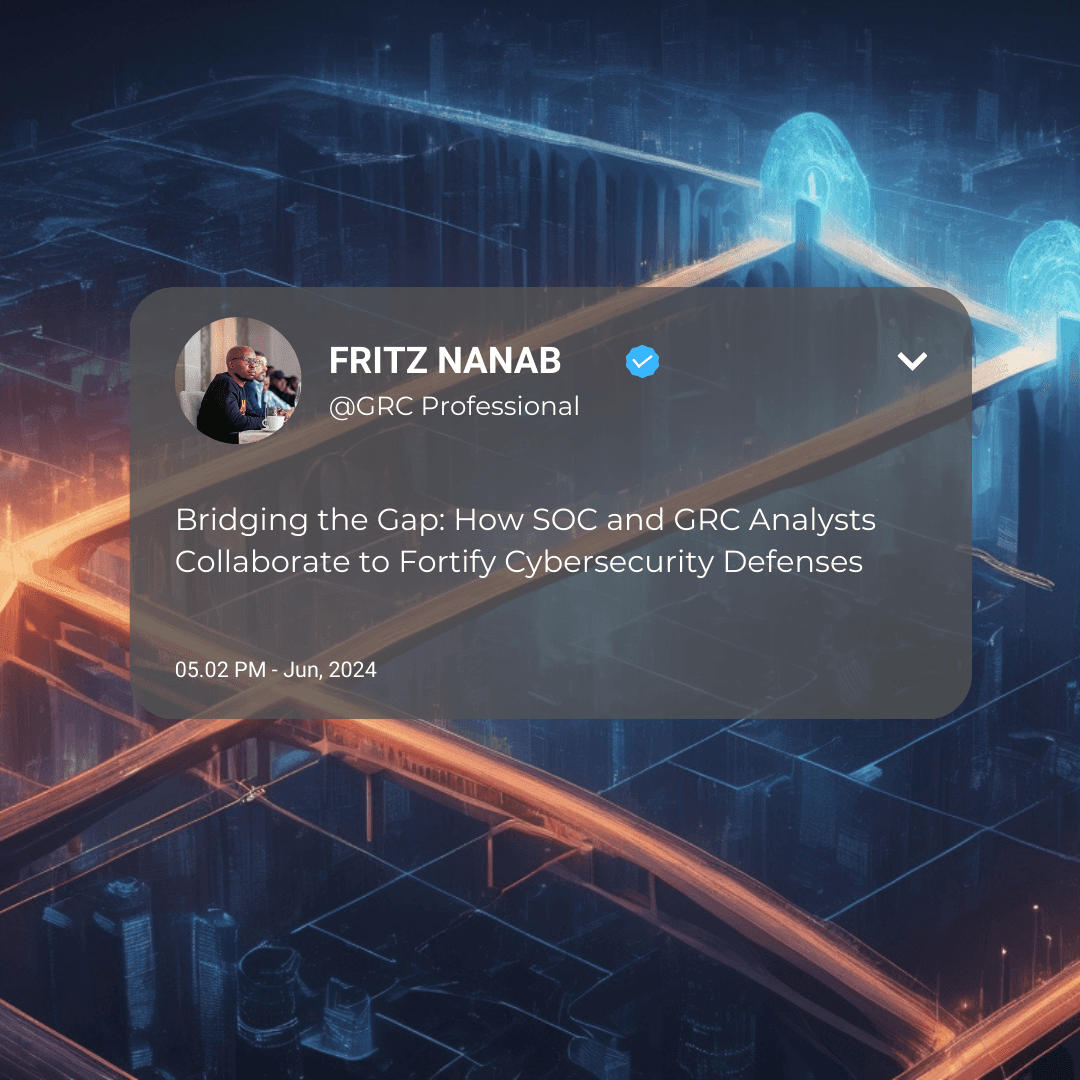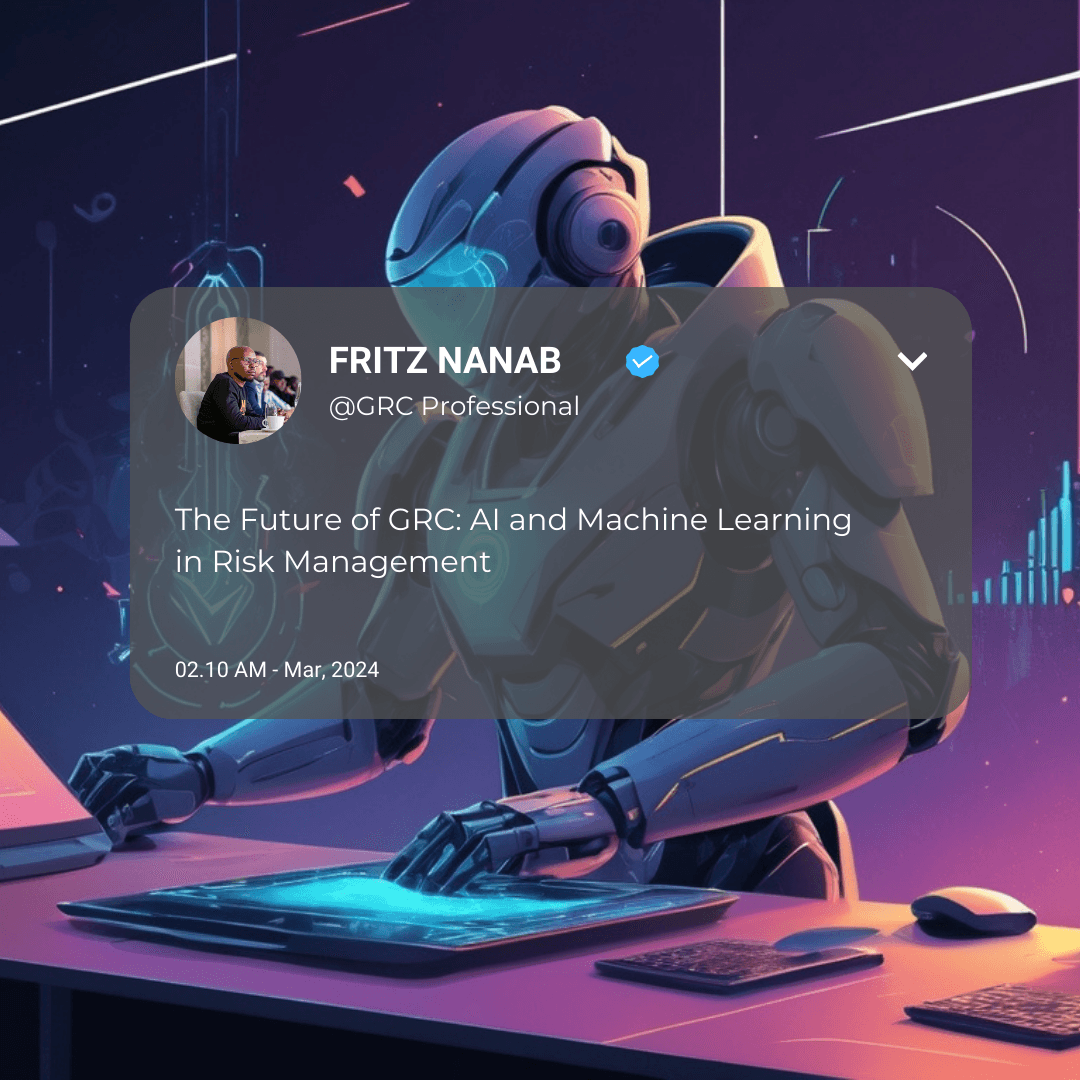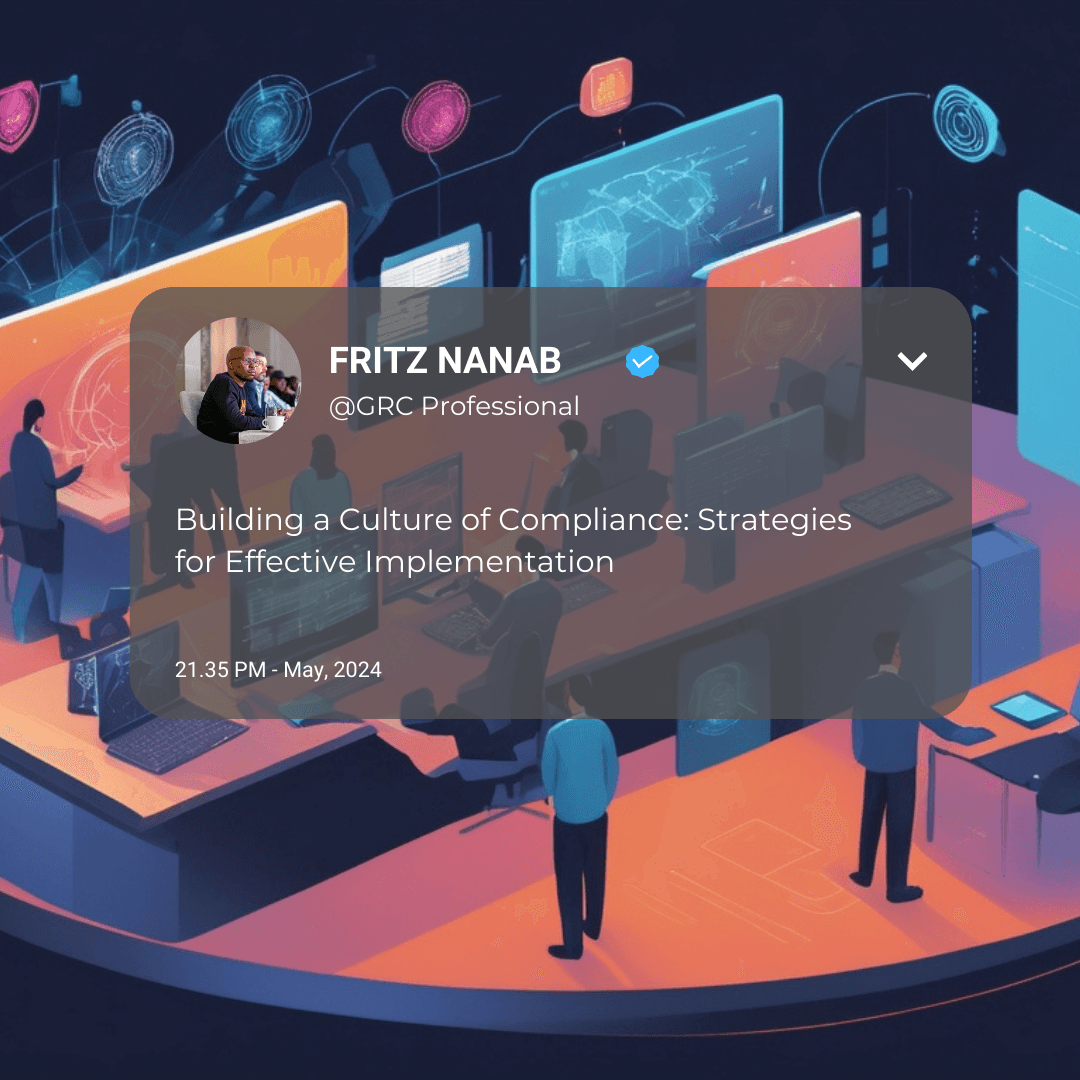Bridging the Gap: How SOC and GRC Analysts Collaborate to Fortify Cybersecurity Defenses

Introduction
In the ever-evolving landscape of cybersecurity, the roles of Security Operations Center (SOC) Analysts and Governance, Risk, and Compliance (GRC) Analysts have become increasingly intertwined. As cyber threats grow in sophistication and frequency, organizations are recognizing that a siloed approach to security is no longer sufficient. This blog post explores the critical intersection of these two roles and how their collaboration is essential for maintaining a robust and adaptive cybersecurity posture.
The Evolving Cybersecurity Landscape
Today's cyber threats are more complex, persistent, and damaging than ever before. From nation-state actors to organized cybercrime groups, the adversaries organizations face are well-funded, highly skilled, and constantly evolving their tactics. Traditional approaches to cybersecurity, where different departments operate in isolation, are no longer adequate to address these challenges. The need for a more integrated, holistic approach to security has never been more apparent.
Understanding the Roles
To appreciate the synergy between SOC and GRC analysts, it's crucial to understand their individual roles and responsibilities.
SOC Analyst:
SOC analysts are the front-line defenders in an organization's cybersecurity efforts. Their primary responsibilities include:
Monitoring security alerts and events in real-time
Investigating and triaging potential security incidents
Performing initial incident response and escalation
Conducting threat hunting to proactively identify potential compromises
Managing and fine-tuning security tools and technologies
SOC analysts typically work with a range of tools, including Security Information and Event Management (SIEM) systems, Intrusion Detection/Prevention Systems (IDS/IPS), and threat intelligence platforms.
GRC Analyst:
GRC analysts focus on the broader strategic and compliance aspects of cybersecurity. Their key areas of focus include:
Developing and maintaining security policies and procedures
Conducting risk assessments and managing the risk register
Ensuring compliance with relevant regulations and standards (e.g., GDPR, HIPAA, PCI DSS)
Overseeing internal audits and facilitating external audits
Advising on security controls and their implementation
GRC analysts work with frameworks like NIST, ISO 27001, and COBIT, and use GRC platforms to manage their activities.
The Synergy Between SOC and GRC
While SOC and GRC analysts have distinct roles, their ultimate goal is the same: protecting the organization's assets and information. Their collaboration creates a powerful synergy that enhances the overall security posture:
SOC analysts provide real-time insights into the current threat landscape, which informs GRC risk assessments and policy decisions.
GRC analysts offer a strategic view of the organization's risk appetite and compliance requirements, guiding SOC priorities and operations.
Together, they create a more comprehensive and adaptive security strategy that balances immediate threats with long-term risk management.
Information Flow: From SOC to GRC
A critical aspect of SOC-GRC collaboration is the flow of information about newly discovered threats and vulnerabilities. SOC analysts are often the first to identify new attack vectors, emerging threats, or previously unknown vulnerabilities in the organization's systems.
This information needs to be promptly and accurately communicated to the GRC team. Effective communication channels might include:
Regular briefings or reports
Shared ticketing or incident management systems
Real-time dashboards displaying current threat levels and incidents
The timeliness of this information sharing is crucial, as it allows GRC analysts to quickly assess the potential impact on the organization's risk profile.
Integrating SOC Insights into GRC Frameworks
When GRC analysts receive information about new threats or vulnerabilities from the SOC team, they need to integrate this into their existing risk management frameworks. This process typically involves:
Updating the risk register with newly identified threats
Reassessing and adjusting risk scores based on the latest threat intelligence
Prioritizing risks and allocating resources accordingly
Aligning existing security controls with emerging threats, or implementing new controls as needed
This integration ensures that the organization's risk management strategy remains current and effective in the face of evolving threats.
GRC's Role in Enhancing SOC Effectiveness
The collaboration is not one-sided; GRC analysts play a crucial role in enhancing the effectiveness of SOC operations:
Providing regulatory context: GRC analysts ensure that SOC activities align with relevant compliance requirements.
Guiding resource allocation: Risk assessments conducted by GRC analysts help prioritize where SOC resources should be focused.
Enhancing incident response: GRC input ensures that incident response procedures meet legal and regulatory requirements.
Collaborative Approach to Incident Response
One of the most critical areas where SOC and GRC collaboration shines is in incident response. A joint approach ensures:
Comprehensive incident response plans that address both technical and compliance aspects
Effective real-time collaboration during active incidents, with clear roles and responsibilities
Thorough post-incident analysis that feeds back into both SOC operations and GRC frameworks
Continuous Improvement Cycle
The SOC-GRC collaboration creates a virtuous cycle of continuous improvement:
SOC findings inform updates to GRC policies and procedures
GRC risk assessments drive enhancements to SOC monitoring and alerting capabilities
Lessons learned from incidents and near-misses are incorporated into both SOC playbooks and GRC risk registers
Challenges in SOC-GRC Collaboration
Despite its benefits, SOC-GRC collaboration is not without challenges:
Communication barriers: Technical SOC analysts and policy-focused GRC analysts may sometimes speak different "languages."
Differing priorities: The immediate focus of SOC operations may sometimes clash with the longer-term view of GRC.
Knowledge gaps: Each team may lack full understanding of the other's domain, leading to potential misunderstandings.
Best Practices for Effective Collaboration
To overcome these challenges and maximize the benefits of collaboration, organizations should consider:
Regular joint meetings and workshops to align priorities and share knowledge
Implementing shared dashboards and reporting tools for improved visibility
Cross-training initiatives to build mutual understanding
Establishing clear communication channels and protocols
Case Study: SOC-GRC Collaboration in Action
Consider the following scenario: A SOC analyst identifies a new type of malware targeting the organization's industry. They immediately share this information with the GRC team. The GRC analysts quickly assess the potential impact, update the risk register, and work with the SOC to implement new detection rules. They also revise the incident response plan to address this specific threat.
When the malware eventually reaches the organization, the SOC is prepared to detect it quickly. The incident response team, guided by the updated plan, contains the threat before it can cause significant damage. In the aftermath, both teams collaborate on a thorough analysis, further refining their joint approach to similar threats.
This example illustrates how effective SOC-GRC collaboration can significantly enhance an organization's ability to prevent, detect, and respond to cybersecurity threats.
The Future of SOC-GRC Integration
Looking ahead, the integration of SOC and GRC functions is likely to deepen further:
AI and machine learning will play a larger role in automating information sharing and risk assessment.
We may see the emergence of unified security and compliance platforms that seamlessly integrate SOC and GRC functions.
Roles may evolve, with more cybersecurity professionals developing expertise that spans both SOC and GRC domains.
Conclusion
The collaboration between SOC and GRC Analysts is not just beneficial—it's essential for modern cybersecurity strategies. By bridging the gap between these two crucial roles, organizations can create a more resilient, adaptive, and effective defense against the ever-changing threat landscape. This integrated approach ensures that newly discovered threats are quickly incorporated into the overall risk reduction strategy, creating a dynamic and responsive security posture.
Call to Action
Evaluate your organization's current level of SOC-GRC collaboration. Are there opportunities to enhance information sharing, joint decision-making, or integrated processes? Consider implementing some of the best practices discussed to strengthen your overall security posture. Remember, in the face of today's complex cyber threats, collaboration is not just an advantage—it's a necessity.
- Fritz Nanab

